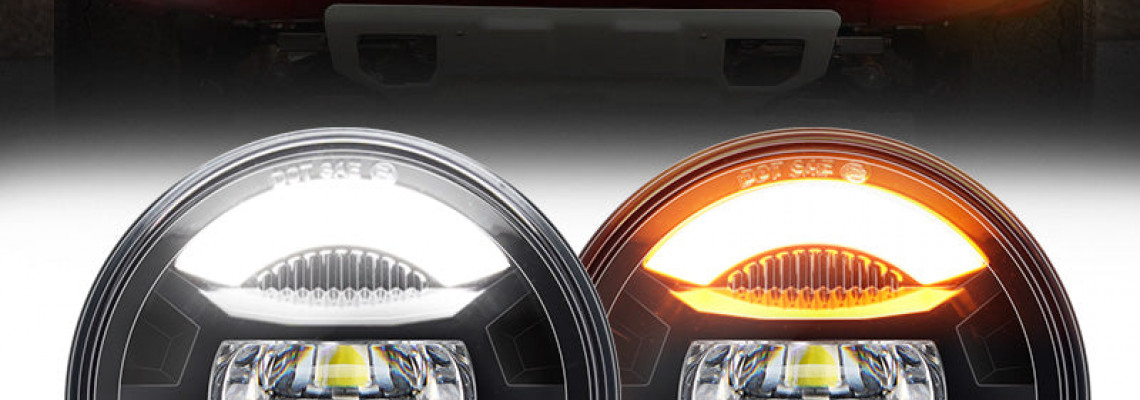What is a Sealed Beam Headlight? Halogen, LED, HID Options

Tech Tips: What is a Sealed Beam Headlight? Halogen, LED, HID Options
Tech Tips: What is a Sealed Beam Headlight?
New cars were only permitted to have sealed beam headlights for 42 years. At the moment, automakers create units that are entirely exclusive to their model. This implies that Nissan will produce a distinct headlamp design for every model of its automobile. If yours breaks or goes out, you need to swap either the bulb or the housing completely.
Prior to 1983, all headlights were required to be sealed beams. As a result, the majority of headlamps were round and rectangular in design. We examine sealed beam headlights' technical and historical background to see how they operate and how far the technology has advanced.
WHAT ARE SEALED BEAMS?
The sealed beam headlamp is composed almost entirely of glass and is designed to be easily replaced. Since the headlight was the bulb, you would have to go to the dealership or your neighborhood auto parts dealer to buy a new pair if it broke or went out.
Additionally, since your car probably took one of the following sizes, having them replaced was very convenient: round, 6 or 7 inches, 4 by 6 inches, or 5 by 7 inches. Since all cars sold in the US between 1940 and 1956 required to have a 7-inch round lamp, getting a replacement was very simple.
Its construction involves three contacts sticking out of the back of the headlight on one side. The filaments inside the lamp are connected to these three connections, which are set into the back of the device.
These three connections operated the headlight: a low beam has one, and a high beam has two. Unfortunately, the design and composition of these enclosed beam units made them vulnerable to moisture retention.
A BRIEF HISTORY OF SEALED BEAM HEADLIGHTS
When the sealed beam headlamp was first launched in 1940, it was intended to compete with all of the other distinctive headlight bulbs that automakers had previously utilized. The development of headlights in cars began in the early 20th century. Because they are battery-operated, headlamps are frequently too costly. Because they were not mass-produced, these lights were primarily reserved for consumers who could afford them.
By the 1910s, the average car customer started to gradually accept electric headlights. There was still work to be done, but these were far safer than earlier versions. Beam patterns didn't start to take shape until the 1930s when it was realized how much they helped drivers at night, even though they weren't burning at the first sign of rain.
In an attempt to standardize the headlights used by the auto industry, the US government required all cars to have two 7-inch round bulbs by the 1940s. In order to accommodate four units total on an automobile, the government relaxed the regulations in the late 1950s. Therefore, instead of the usual two units, higher-trim versions with four units were available from manufacturers like Cadillac and Mercury.
Furthermore, these additional lamps could function as low and high beams independently rather than as a single unit that could do both. If your car had four headlights, the second pair of headlights might have been utilized as high beams.
The US government first approved rectangular headlights before they were converted to composite-based headlights, which replaced the individual bulbs rather than the entire system when they failed. Even though they were still sealed beams, this alteration was a significant departure from the early 1970s automotive design language.
Next is the year 1984. A Nightmare on Elm Street, Ghostbusters, and Sixteen Candles were shown on American movie screens in the same year. A change to Federal Motor Vehicle Safety Standard 108 eliminated the need for sealed beam headlights.
As opposed to replacing the entire lamp, car owners could rest easy knowing that changing their headlights would only need returning to their neighborhood auto parts store and selecting the proper bulb. Because of this new rule, automakers were also free to try out novel and distinctive headlight designs.
COMPOSITE VS SEALED BEAM HEADLIGHTS
Thanks to this new amendment, we now have composite headlights. Composite headlights, which were primarily composed of plastic, replaced sealed beam bulbs, which were all one-piece. As a result, the glass cover was removed from the sealed beams. The main benefit was that changing the bulbs was simple.
The vehicle industry moved toward more contemporary molded plastic designs as style and technology advanced. These frequently featured many light bulbs and were exclusive to a particular car, usually having no more than two or three.
#BBD0E0 »